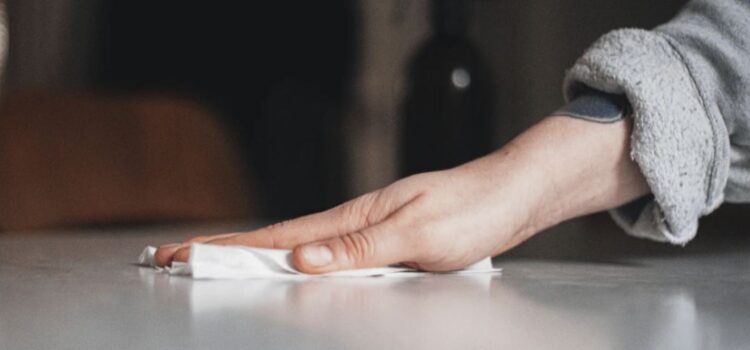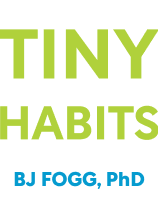

This article is an excerpt from the Shortform book guide to "Tiny Habits" by BJ Fogg. Shortform has the world's best summaries and analyses of books you should be reading.
Like this article? Sign up for a free trial here .
How can making tiny, daily changes improve your entire life? How can you become a Habiteer?
The book Tiny Habits is about how it doesn’t take huge amounts of motivation or effort to make big changes in your life. All it takes is the willingness to incorporate habits that take less than 30 seconds every day. It’s the tiny habits that change everything, not the large, unsustainable ones.
Continue on to learn how you can make tiny changes for huge results.
Tiny Habits Can Change Everything
In Tiny Habits, Stanford behavioral scientist BJ Fogg argues that the best way to change behavior is to start small. Fogg encourages us to drop any moral judgment about “good” and “bad” habits and view our behavior scientifically, using specific behavior design skills to engineer lasting changes. Fogg’s theory rests on the idea that it’s the tiny habits that change everything and are the most sustainable.
The Fogg Behavior Model
The Fogg Behavior Model is a simple formula that lets you pick apart the components of any particular behavior. This formula is B = MAP, where B is Behavior, M is Motivation, A is Ability, and P is Prompt. A behavior only happens when all three MAP variables are present at the same time.
Let’s look at each of these components in turn:
- Motivation is less important than most of us think. It’s unreliable, it’s hard to budge, and some of our motivations are unconscious or conflict with one another. On top of that, motivation can be especially difficult to muster when we’re stressed.
- Ability is how easy or difficult it is for us to do the behavior. We can work with Ability in two ways: by improving our own skills, or by making the behavior easier (the central method in Tiny Habits).
- The Prompt is your reminder to do the behavior. Without the Prompt, it doesn’t matter how high your Ability and Motivation are—the behavior won’t happen.
The Action Line is a graphical representation of this model, plotting Motivation on the horizontal axis and Ability on the vertical axis. In the graph below, the blue star is a behavior that’s very easy to do and for which you have a moderate level of motivation. It sits far above the action line, so when you’re exposed to the prompt you’ll have no problems doing this behavior. The green star is a behavior that’s much more difficult. Though you have almost as much motivation as for the blue star behavior, the high level of difficulty means that even with a well-designed prompt you won’t get above the Action Line and manage to do the behavior.
The Behavior Design Process
The Behavior Design process is the method we use to convert the Fogg Behavior Model into a new habit. It consists of seven steps, which we move through one by one to convert a vague aspiration into a lasting habit.
1. Pinpoint your exact aspiration or outcome. Get very clear on what exactly you want to achieve. The clearer your aspiration is, the more likely your new habit is to succeed.
For example, let’s say your aspiration is to be less tired during the day. But when you really think about the root of the problem, you might realize that a better aspiration is “Get better sleep.” You use this as the starting point for your design.
2. Brainstorm possible behavioral solutions. Write your aspiration in the middle of a page or whiteboard and put a circle around it. How many different specific behaviors can you come up with that might help you achieve this? Be wacky and creative as well as logical and realistic, and aim to write down at least 20 different behaviors. When you’re finished brainstorming, you’ll have a diverse Swarm of Behaviors (“Swarm of Bs”) that you can use in the next step.
For example, let’s continue with the aspiration “Get better sleep.” You might come up with the following behaviors: “Buy a blackout curtain,” “Try a white noise machine,” “Move to somewhere quieter,” “Try aromatherapy,” “Stop napping during the day,” and so on. When you have your initial set of behaviors, look over them and make sure they’re as specific as possible. For example, you could change “Try aromatherapy” to “Take a hot lavender-scented bath.”
3. Identify the Golden Behaviors. To find your Golden Behaviors, you engage in a process called Focus Mapping. To Focus Map, write your Swarm of Bs on individual index cards. Then draw up some axes as shown here: The vertical axis shows the impact of the behavior, while the horizontal axis shows its feasibility.
First, think only about the vertical axis. For each of the cards, ask yourself: Will this be an efficient way to achieve my aspiration? If the behavior is likely to be high-impact, put it near the top. If it’s not, put it near the bottom.
Then think only about the horizontal axis. For each of the cards, ask yourself: Is this realistic? Do I really want to do this? Move the cards to the left or right based on your answer.
You should end up with a few behaviors in the top right-hand quadrant. These are your Golden Behaviors. For example, you might find that “take a hot lavender-scented bath” is both high-impact (lavender and baths have both been shown to positively affect sleep) and feasible (you have a bathtub, you enjoy using it, and you often have some free time in the evening).
Choose a small number of these (one to five) and focus only on them in Steps 4 to 7. If you don’t have any behaviors in that quadrant, create another Swarm of Bs and try again.
4. Find the tiny version. The core of Tiny Habits is making any new habits so small that they’re completely unintimidating. By doing this, you’re protecting them as much as possible from the vagaries of motivation. This often results in a behavior that’s so tiny that it seems absurd: turning on the stovetop burner, putting on your walking shoes, flossing one tooth. This may feel silly, but go with it. Tiny actions can be surprisingly powerful.
There are two ways you can create a tiny version of a behavior. You can figure out what the very first step (Starter Step) of the behavior is and go with that. Or you can do a part of the behavior for a very short time (Scaled-Back Version). For example, let’s say that “take a hot lavender-scented bath” is one of your Golden Behaviors. A Starter Step for this behavior might be taking out the lavender oil and unscrewing the cap. A Scaled-Back Version might be running some hot water in the sink, adding a few drops of lavender oil, and inhaling the scent for a couple of minutes.
5. Choose your prompt. Remember, no behavior happens without a prompt. Once you’ve identified which tiny behavior you want to introduce into your life, you need to find a good prompt to remind you to do it. You can tie this prompt to yourself (some kind of internal emotional or physical cue), your context, or an action in a pre-existing routine. Action-based prompts are special in Tiny Habits. They’re called Anchors.
For example, a person-based prompt for the lavender bath might be “when I feel tired at night.” For a context-based prompt, you could leave the lavender oil bottle in the bathroom where you can see it. And for an Anchor, you could decide to do your tiny habit right after you’ve put the kids to bed.
6. Celebrate. Celebration is incredibly important in Tiny Habits. In fact, celebrating well is a habit in its own right, one that we can cultivate to make us happier, more resilient, and nicer to be around. Experiment to find some celebrations that work for you. Aim for celebrations that make you feel “Shine”: an authentic sense of accomplishment and happiness. Perhaps your best route to Shine is raising your fists in victory, or humming a snatch of the theme song from Rocky, or nodding your head quietly to yourself in affirmation. A genuine celebration immediately after you do your habit helps your brain to encode and automatize the behavior sequence, so it’s important not to skip this step.
For example, a good celebration for the tiny behavior of unscrewing the cap on the lavender oil bottle might be smiling wide, yawning, and stretching luxuriously.
7. Repeat, refine, and upgrade. The Behavior Design process is like an experiment. Play around with the sequence and modify things as you go. If your tiny habit isn’t working, go back to your Swarm of Bs and pick another one. If the prompt you’ve chosen is unreliable or if you’ve become good at ignoring it, pick another one. Remember that if a new habit fails, the problem isn’t you—it’s how the habit has been designed.
When repeating, refining, and upgrading, you gradually expand the Tiny Habit to make it less tiny. You allow it to grow naturally, not pushing yourself to build it up too fast or getting down on yourself if you mess up. In time, your tiny habit of unscrewing the cap on the lavender oil bottle may evolve into a luxurious hour-long bubble bath. Sometimes, of course, you won’t have time for this, and sometimes you won’t have the motivation. The important thing is to keep the habit alive by unscrewing that bottle cap every day.
Shedding Bad Habits
Though Tiny Habits wasn’t initially designed to help people get rid of bad habits, you can also apply the Fogg Behavior Model and the Behavior Design process to “reverse engineer” habits out of your life. This doesn’t apply to serious addictions, however—Tiny Habits aren’t a substitute for professional help.
To begin with, we can classify habits into three types: Uphill Habits, which we have to work to keep going (going to the gym every day, getting up early, cleaning the kitchen), Downhill Habits, which we have to work to stop doing (scrolling through social media, sleeping through the alarm, eating fast food), and Freefall Habits, which are almost impossible to stop (serious addictions). When applying Tiny Habits to bad habits, we’re talking about the Downhill Habits.
How to Eliminate Downhill Habits
We usually use the word “break” when talking about stopping a bad habit, but this metaphor doesn’t work in the Tiny Habits context. A better metaphor is a complicated snarl of knots in a string. We’re unraveling this tangle one knot at a time. When approaching a tangle like this, you work on the easiest, most accessible part first.
To eliminate an existing habit, apply the Fogg Behavior Model and the Behavior Design process in reverse.
If the behavior is already happening, there must be a regular convergence of Motivation, Ability, and Prompt in your daily routine. Can you disrupt one or more of these factors to stop the behavior from happening?
- Can you reduce your Motivation to do the behavior? (This is hardest; leave it until last.)
- Can you reduce your Ability to do the behavior? (This is a good bet. Think about ways to make the activity physically harder, mentally harder, more expensive, and more time-consuming.)
- Can you get rid of the Prompt, or at least reduce its effectiveness? (Perhaps you can stop walking down the junk food aisle at the supermarket, or silence your phone, or delete a social media app.)
Apply the Behavior Design steps. Go through the seven steps of Behavior Design to design away the existing behavior. Perhaps the overall problem is “Eating junk food.” Create a Swarm of current Bs that feed the general problem, for example: “Eating a chocolate muffin in my morning break,” “Ordering hamburgers when I’m too tired to cook,” “Eating ice cream when I’m feeling down,” and so on. Which of these will be easiest to stop? Focus on that one first. See if you can manipulate the Ability and Prompt dimensions to design it away and introduce a healthier version in its place. And don’t forget to celebrate when you do your new, healthier habit.
When the first habit has fallen away, pick the second-easiest knot to untangle, and patiently work through the rest of them one by one. If you’re struggling, it may help to:
- Substitute a new habit for the old one. Remap the prompt so that it prompts you to do another behavior. Ideally, this behavior should be both easier and more motivating than the one you’re trying to get rid of. This is very individual, but someone who loves flowers could, for example, walk past the bakery to the florist and buy a beautiful bunch of flowers.
- Refashion the prompt. Find the prompt that triggers your unwanted behavior and begin to associate it with a new behavior. For example, if you usually open the fridge and grab the first thing you see in there, open the fridge and take three deep breaths instead. Remember to celebrate to lock in this new response.
- Experiment. If it doesn’t work the first time, choose another new behavior and try again. Remember that if you’re shopping for shoes, you usually don’t buy the first pair you try on. Treat finding the substitute behavior like shopping for shoes. If one pair doesn’t fit, keep looking.
- Try a substitute behavior for a limited period (three days; a week) and evaluate after that.
- Get to know your own weak points and take advantage of them. For Fogg, making a behavior physically difficult is the best way to get rid of it.
- If nothing changes, leave the bad habit alone for a while. Go back and sharpen your behavior change skills on other changes. Come back to the habit later.
It’s important to work skillfully with emotions when breaking bad habits. In both cases, we take judgments such as “character” and “weakness” out of the equation. When unraveling old habits, we bypass the feelings of shame and powerlessness that often accompany habits we’d like to stop.
Changing in a Group
When applying the Behavior Design process in a group, first make sure you have some experience applying it to yourself individually. This gives you confidence that you can iron out any bugs as they come along.
When leading group change, you can take either of two roles: the Ringleader or the Ninja. The Ringleader, perhaps a formal authority figure or a family member who’s read Tiny Habits and wants to apply it, openly explains the Fogg Behavior Model and guides the group through the Behavior Design steps. The Ninja, perhaps a team member lower down on the hierarchy or the parent of teenage children, slips Behavior Design principles into general discussions to make sure the change process stays on track.
For example, during Focus Mapping, a Ringleader might draw the Impact and Feasibility axes on a whiteboard and ask group members to come up and arrange Swarm of B index cards. A Ninja might highlight Impact and Feasibility by asking the group, “But how effective will this actually be?” and “Can we really get ourselves to do this?”
The Future of Tiny Habits
Through Tiny Habits, the tiniest changes in our behavior can ripple out and have far-reaching effects, both in our own lives and in the lives of others. The method has worked with hundreds of individuals and families, often leading to profound positive changes in people’s identities or in family dynamics. Large organizations, such as hospitals, are also turning to Fogg for help with problems like employee burnout. He’s found that the method is as effective for groups as it is for individuals, but it needs to be tailored to fit every time.
Fogg envisages a future in which we can use his behavior change methods to tackle complex global problems, one Tiny Habit at a time.

———End of Preview———
Like what you just read? Read the rest of the world's best book summary and analysis of BJ Fogg's "Tiny Habits" at Shortform .
Here's what you'll find in our full Tiny Habits summary :
- How you can successfully create new habits that stick
- Why you don't need motivation, just science
- Why even flossing one tooth should be considered a victory






